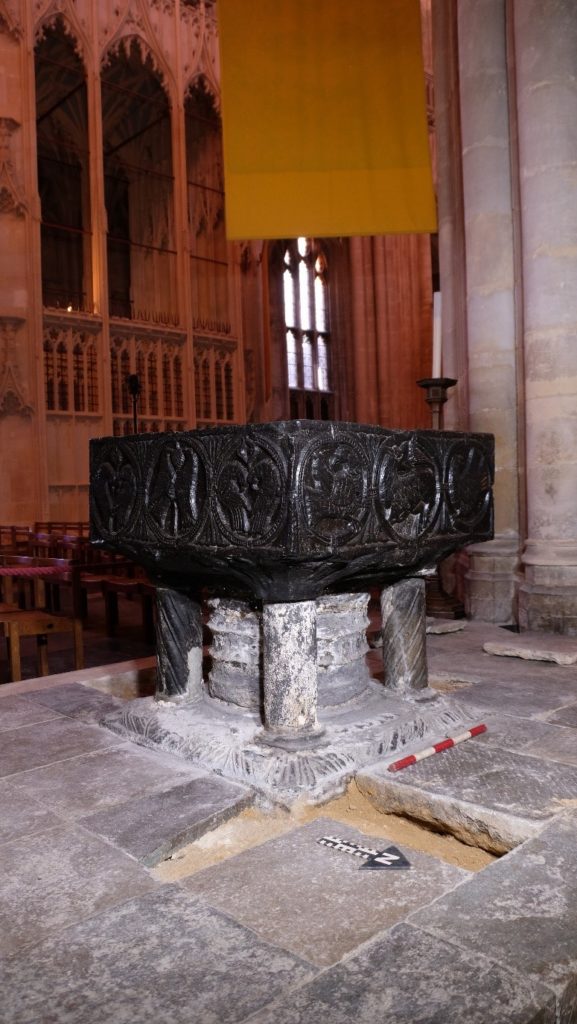“The Tournai Marble font is one of Winchester Cathedral’s greatest treasures and is still used for baptisms. The font features scenes from the Miracles of St Nicholas of Myra on its four sides and may have been commissioned by Bishop Henry of Blois around 1150. It is widely considered the finest of a small group of fonts that were most likely carved at Tournai (now in Belgium) and were shipped to England in ‘kit’ form.
“It has been clear for some years that deposits of mineral salts from water have been crystallising out on the lower parts of the font, damaging the stonework. A few years ago the decision was made to stop releasing the baptismal water down the font’s central drainage hole to reduce the amount of water and damp in the base of the font, whilst allowing baptisms to continue (with the water taken away after use).
“The next stage was to see how we could allow the font to ‘breathe’ a bit more, and to clean off the salts, however the Cathedral team felt there was more to understand about what was going on with the water at the font, so we obtained permission to dig some small test pits around the font to check moisture levels and learn more about how the font platform was constructed.
“We discovered that the Purbeck pavers are forming an almost impermeable barrier to ground water rising up through the font platform, with the fill beneath the pavers palpably moist. Unable to escape through the pavers, the water is picking up through the font where the water then evaporates, leaving behind the salts.
“The test pits also revealed more about the construction of the font platform which was built when the arcade was remodelled in the 14th century by William of Wykeham. Once the arcade piers had been finished the platform steps were laid, and a rubble and mortar base formed to carry the font; the platform was infilled with stone dust, mortar and rubble, and the platform paved. The pavers look to have been reset at least twice and many are modern replacements, pointed with impermeable Portland cement.
“Now we understand the mechanisms better, the team are working on how to mitigate the water movement and conserve the font for future generations.”
Chiz Harward, Cathedral Archaeologist.


